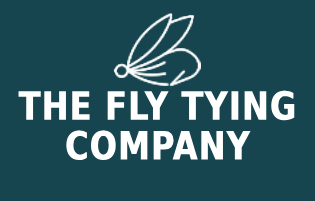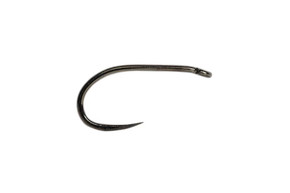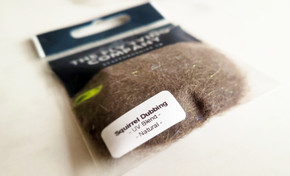The Dun Emerger is a subtle, highly effective fly designed to imitate the transitional stage of a mayfly as it emerges from the nymph into a dun. Sitting low in the surface film, it presents a vulnerable and irresistible target for trout, particularly during prolific hatches. This pattern has become a staple in many UK fly boxes for fishing both rivers and stillwaters where mayfly or upwing hatches are present.
Origin & History
The Dun Emerger pattern grew in popularity in the late 20th century as fly tiers sought to better represent the critical “emerging” stage of the mayfly lifecycle. Traditional dry flies like the Blue Dun rode too high on the water, while nymphs sank beneath the surface. The emerger pattern bridged the gap, allowing anglers to effectively match the hatch during tricky hatches when trout keyed in on insects struggling in the film.
Materials
- Hook: Light emerger hook, sizes 12–18
- Thread: Olive or brown UTC 70D
- Tail/Shuck: Z-lon, Antron or CDC fibres
- Body: Fine dubbing (olive, tan, or grey)
- Wing: CDC feather tips or poly yarn
- Thorax: Slightly darker dubbing (hare’s ear, olive, or superfine)
Step-by-Step Tying Guide
- Secure the hook in the vice and run thread down to the bend.
- Tie in a sparse tail/shuck of Antron or CDC fibres, extending roughly half a hook length beyond the bend.
- Dub a slender body with olive or grey dubbing, tapering slightly as you move forward.
- Tie in a CDC wing facing forward, about the length of the hook shank.
- Add a darker dubbing to build up a thorax just behind the eye, ensuring the wing sits upright or slightly angled forward.
- Whip finish neatly behind the eye and apply a tiny dab of varnish if required.
Popular Variations
- Sparkle Emerger – uses sparkle yarn for the shuck to increase visibility.
- CDC Dun Emerger – wing made entirely of CDC for added buoyancy.
- Foam Post Emerger – adds a foam post for visibility in faster water.
- Comparadun Emerger – deer hair wing instead of CDC for a different profile.
- Rusty Dun Emerger – tied in rusty brown tones to match spinner falls.
Seasonality & Representation
The Dun Emerger is most effective during spring and summer when upwinged mayflies (Ephemeroptera) are hatching. It works well on rivers like the Test, Usk, and Itchen, but can also be deadly on stillwaters where olives and other upwings are present. Fish it during late morning to early evening when hatches peak, particularly on calm, overcast days.
Tackle & Setup
- Rod: 9ft to 10ft, 3–5 weight for rivers; 5–6 weight for stillwaters.
- Leader: 12–15ft tapered leader with 3–5X tippet.
- Presentation: Dead drift with occasional twitch to mimic struggling emergence.
- Water Type: Works best in smooth glides, riffles, and during mayfly hatches on lakes.
Summary Table
| Feature | Details |
|---|---|
| Imitates | Emerging mayfly dun |
| Best Seasons | Spring to summer |
| Sizes | 12–18 |
| Water Types | Rivers and stillwaters |
| Difficulty | Moderate tying |












